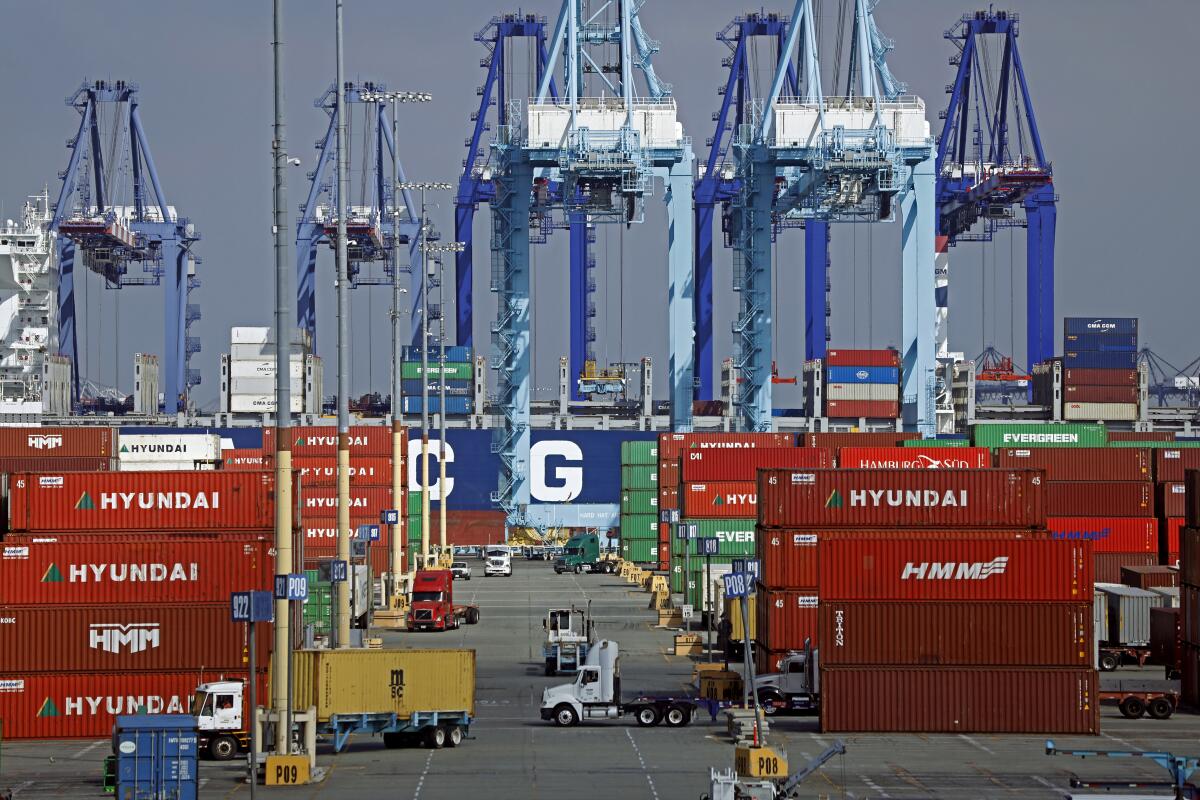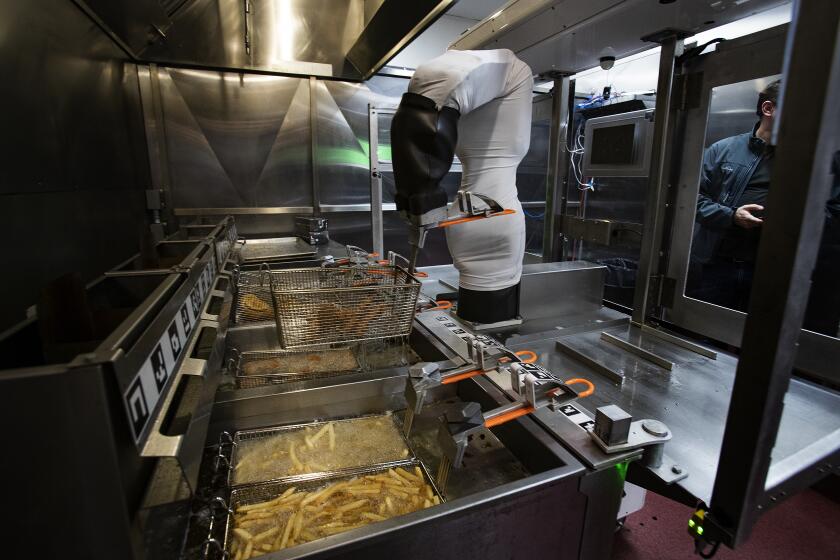Op-Ed: California’s budget surplus has vanished and its economy is in danger. It can go one of two ways

The much-celebrated California boom is facing a harsh reality.
Everything was looking good, based on enormous growth in capital gains in tech stocks and property, and some in Sacramento assumed the bounty would last — until it didn’t. The latest bad news is the evaporation of the state budget surplus that is now rapidly turning into a deficit that could run as high as $22 billion to $40 billion, particularly if there’s a recession.
But although there are dangers ahead, there’s no need to panic. This painful reality can be turned to our advantage and help us pivot our economy toward greater economic diversity and opportunity for most Californians, particularly ethnic minorities.
The fact is, we cannot continue to rely on the tax revenue generated by tech, media and ever-rising property prices to fund our budget and economy. Today, property values are dropping faster in California’s three largest metropolitan areas, including the Southland, than in the rest of country, and even San Francisco’s once-thriving business district faces persistent vacancies.
Meanwhile, new initial public offerings, a critical source of tax revenue, are suffering their biggest decline in two decades, and Hollywood is enduring layoffs at Disney, Warner Bros., Paramount and CBS. In 2022, stocks in media companies lost $500 billion in value, and stocks in tech firms suffered a reversal of an astounding $4 trillion. Tech firms laid off at least 120,000 employees last year.
True, the unemployment rate continues to drop and is close to pre-pandemic levels. But it is falling more slowly in California than in the rest of the country.
Even high-end employment is increasingly leaving the state. California’s growth in the high-paying “advanced” industries (a 50-sector group of industries defined by the Brookings Institution) has lagged behind that of cities like Nashville, Raleigh, N.C., and Austin, Texas. During the second quarter of 2022, California’s economic output shrank by a half-percent while that of archrival Texas grew by 1.8%.
Venture capitalist Marc Andreessen recently compared California to Rome in the year 250, a period when the empire began its final death spiral.
California has the nation’s highest cost-adjusted poverty rate, limited opportunities for working-class families and, remarkably, the highest rate of functional illiteracy. No California metro area ranks in the U.S. top 10 in terms of well-paying blue-collar jobs.
The ports, notably Los Angeles-Long Beach, that have long been linchpins of the blue-collar economy, have been losing ground to rivals in Texas, New Jersey and the Southeast.
In flush times, Gov. Gavin Newsom could hand out thousands of dollars of goodies to struggling households and create massive direct subsidy programs for housing and healthcare. Continuing such largesse seems improbable.
A better option is to adopt policies that reintegrate blue-collar and middle-class Californians into the economy. This is critical as we can no longer count on the 1% — who pay roughly half of the state’s highest-in-the-nation income taxes — to bail out the mass of Californians.
There are great opportunities for reestablishing economic diversity. California is naturally positioned to take advantage of the growing move to re-shore industries, a trend driven largely by tensions with China and supply chain issues. The good news is that industries that are most primed for re-shoring — aerospace, medical equipment, defense and electronics — are also big businesses for California. But right now, California’s regulatory and tax regimes discourage new investment compared with states like Ohio, Florida and Texas, according to a recent Hoover Institution study.
President Biden’s high-tech and “green” energy initiatives could fuel growth in California, notably in fields like semiconductors and sustainable energy, water and farm policies. But although much of the semiconductor industry remains headquartered here, the new surge of chip production is taking place almost entirely in places like Ohio, New Mexico, Arizona and Texas. Similarly, most new electric vehicle and battery plants are in the nation’s heartland, the South or other locations east of the Sierra Nevada.
California should also shift its tech focus away from social media and advertising, dominated by increasingly stagnant quasi-monopolies. Instead the state should focus on promoting more dynamic industries, such as space, medical and environmental technology. But this will require, as with re-shoring, keeping taxes and regulations in check and offering skill training for line workers.
California also can expand its innovative grassroots economy in areas other than tech, such as food, apparel and furniture design. Besides being home to the jeans and casual wear industry, the state has also powered the growth of farmers markets and the organic food industry — the state produces 40% of the nation’s organic food. Many cuisines now popular nationwide, from Mexican food to Korean BBQ and sushi, had their early start here.
Already we see a new wave of restaurants, artisanal food and design companies, highly reflective of the state’s diverse population. Roughly 60% of all California restaurants are owned by people of color, over one-third Asian and a quarter Latino.
Shaheen Sadeghi, founder of California-based Lab Holdings, which creates retail and production ventures for independent companies, suggests the COVID-19 pandemic has had some positive effects on business. “The mediocrities went under, but the people who survived are doing better than ever before. They created new ways of doing business that fit the new realities.”
But to thrive and evolve, these firms need a more positive business climate, Sadeghi says. Attempts to impose a wealth tax would not fit into the plans of aspiring entrepreneurs, some of whom have already exited the state.
The Legislature is also mulling over a proposal to reduce the workweek to four days or 32 hours, and has already passed a host of bills meant to regulate small businesses, such as fast-food outlets. This will not help encourage entrepreneurs to start businesses here.
Essentially, California can go one of two ways. It can continue on its current path, toxic for its middle and working classes, driving away even long-established businesses, and hope that another tech bubble will come around to pay the price for immiseration. Or it can focus, as it has before, on improving basic infrastructure such as roads and water, and on creating opportunities for entrepreneurial ventures that will benefit the state’s citizens and communities.
Our state’s promise is not irrevocably lost. But it can be recovered only by a profound change of direction.
Joel Kotkin is the presidential fellow in urban futures at Chapman University. Marshall Toplansky is a clinical assistant professor of management science at the Argyros School of Business and Economics at Chapman University.
More to Read
A cure for the common opinion
Get thought-provoking perspectives with our weekly newsletter.
You may occasionally receive promotional content from the Los Angeles Times.





